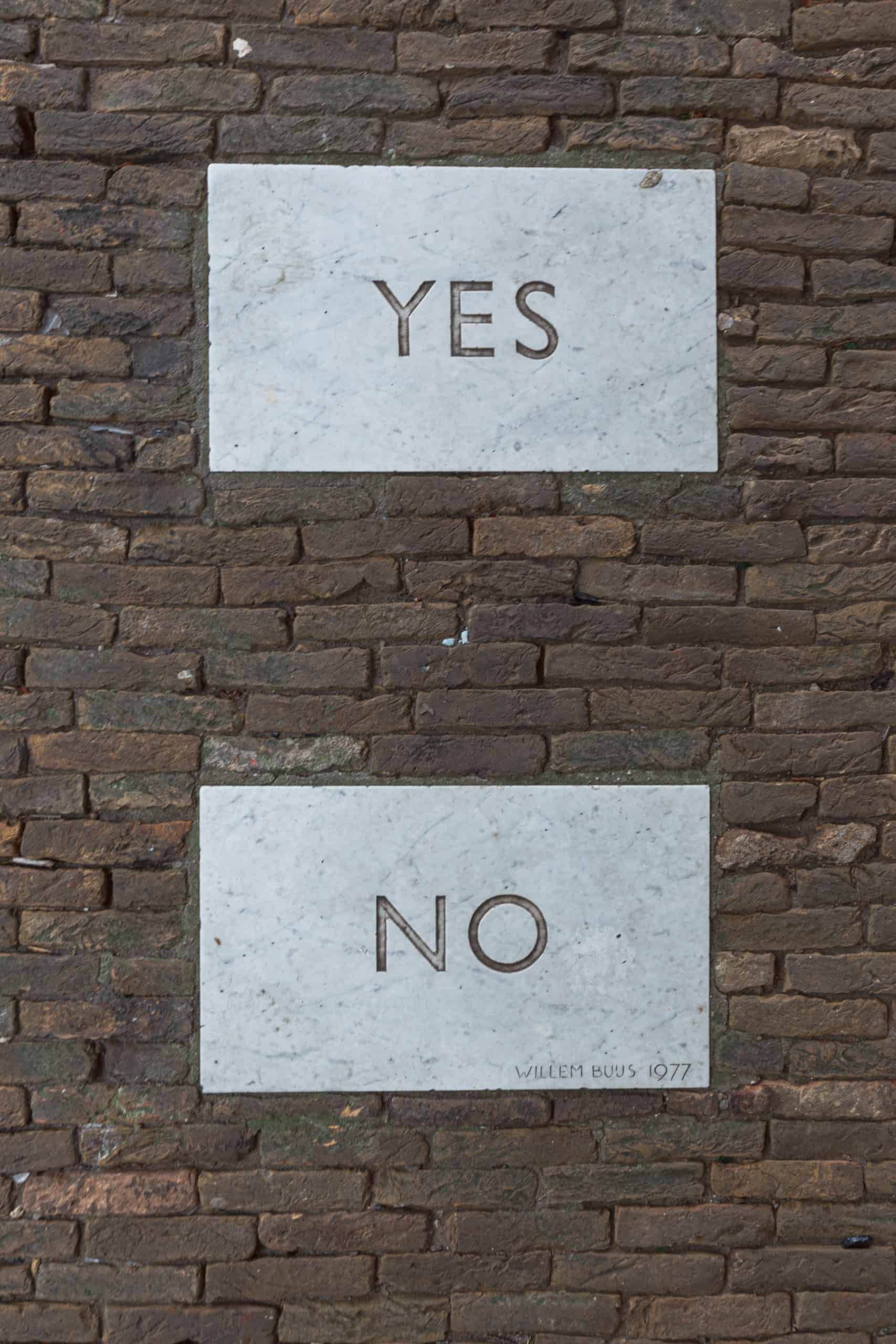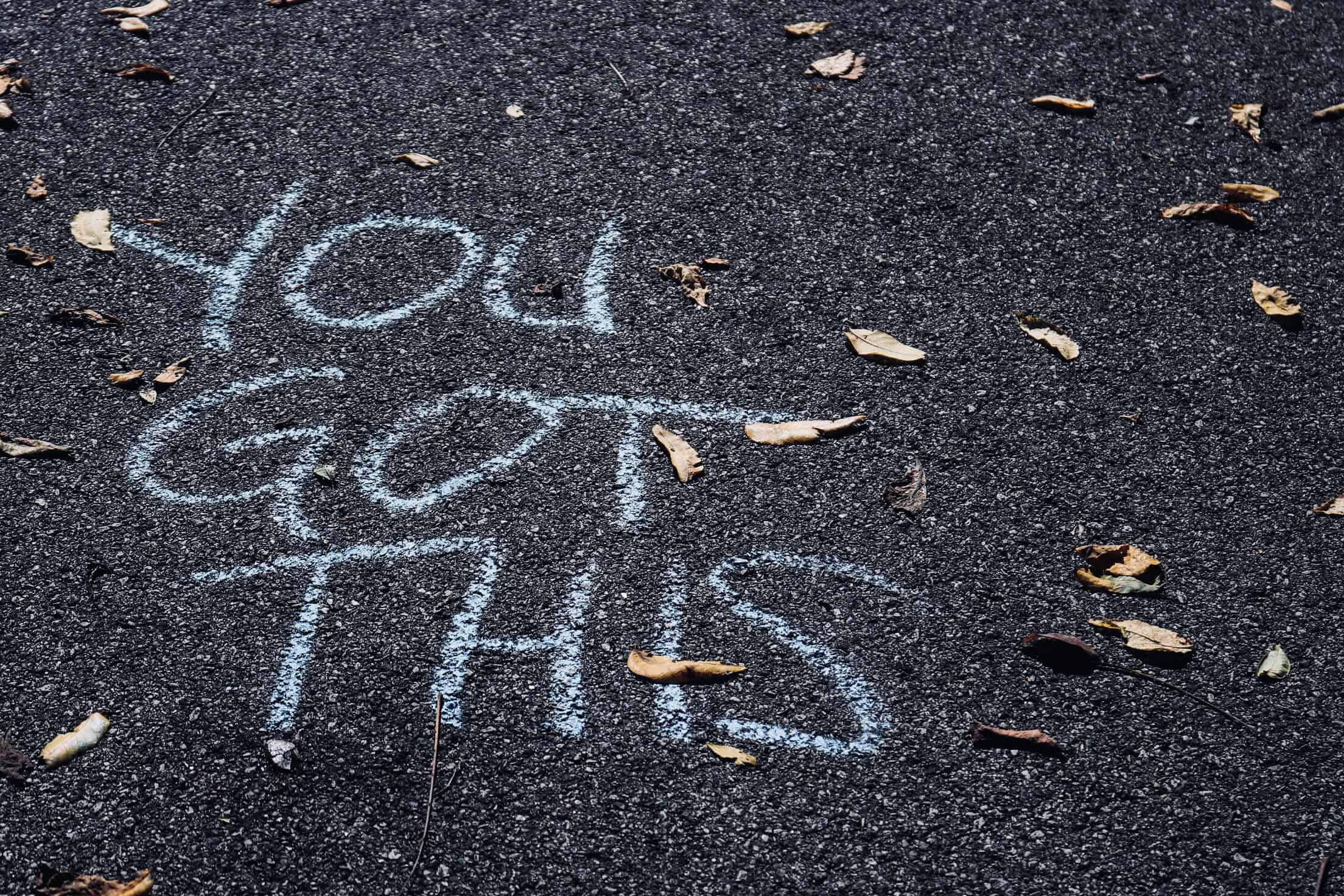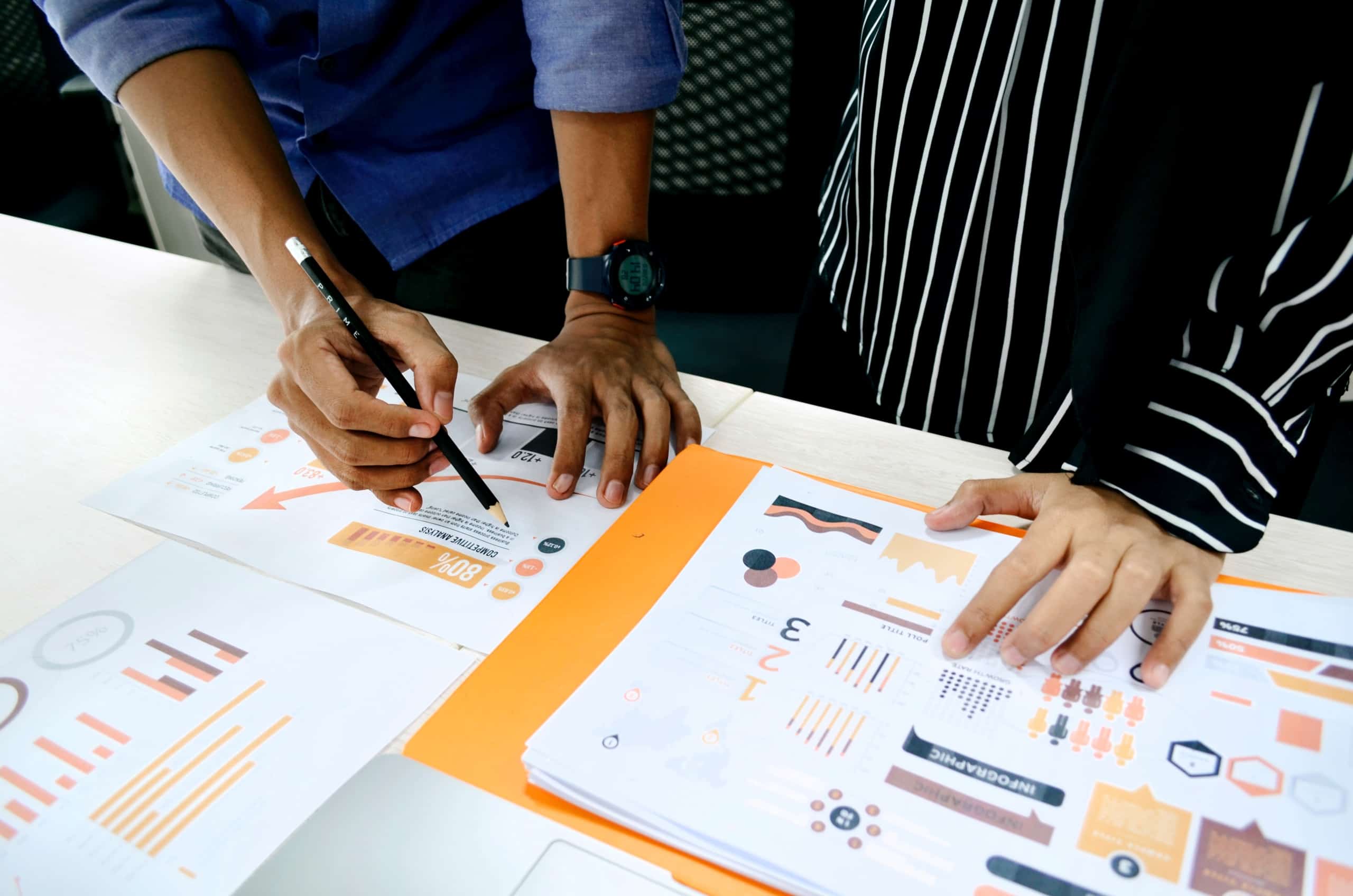How Do You Build Confidence in Decision-Making? – Melissa Dawn
What does it mean to be confident in your decisions?
Many people define confidence in decision-making as the belief that their decision is the correct one; that it will bring the best outcome. The thing is, it’s impossible to accurately predict outcomes. Sure, there are times when we have data, patterns, or other information to rely on, which can make our predictions more likely. However, most of the decisions we make in life aren’t like that.
What job should you take? What neighborhood should you live in? What school do you choose? Should you give that relationship another chance? Do you accept that invitation? Do you have that difficult conversation? Should you speak up about something that’s bothering you? Do you quit your job, or stick it out?
These are the kinds of decisions that keep us up at night, and there is usually little-to-no hard data to help us choose. We can never fully predict the outcome of these decisions; what ripple effects they might have, or what external circumstances may impact them.
How can you feel confidence in your decisions when you can’t be certain of the outcome? With so many factors involved, how do you make a decision without overthinking? Most importantly, how can you make decisions that are truly right for you, regardless of everything outside your control?
In this article, we’ll explore:
What is the Importance of Confidence in Decision-Making?
You can’t be certain of outcomes, so… does it even matter to have confidence? Isn’t it hypocritical to act confident when you have no idea how things will turn out?
Let’s think about leadership, and ask, “Why is confidence important in leadership? What role does it play?”
A strong leader doesn’t guarantee outcomes. What they promise is that they will do their best to make decisions that align with the goals of the organization, and the best interests of their team. They promise that if things don’t work out, they will dive right into solution-mode. They guarantee their approach, not outcomes. They put their energy into their approach, not outcomes. They express confidence in their approach, not outcomes.
It’s these leaders who are most agile – able to dance with whatever comes up – because they haven’t tied their self-worth to things they can’t control. When things go wrong, they don’t wallow, get angry, or shirk responsibility. They take action because they are confident in their ability to respond.
Confidence in decision-making is not confidence in outcomes. It’s confidence that our decisions align with our values and goals, and confidence in our ability to respond to whatever comes up along the way.
Confidence is important because it keeps us grounded in what we actually do control. Being confident of an outcome is not true confidence. It’s arrogance. It’s a belief that we can control the uncontrollable. People may obey arrogant leaders when things are going well, but they tend to jump ship when tides turn. People do, however, align themselves with confident leaders and stay the course when things go wrong, because they know a confident leader will see it through.
Confident decision-making is key to strong leadership, and that includes leadership of ourselves.
How Can You Make Strong Decisions That are Right for You?
You are the foundation of strong decision-making. I’m often asked, “How can I make my decisions strong?” The way to do that is to strengthen your inner connections; your intuition. And that’s learnable. Yes, some people seem more naturally intuitive than others, but it is a genuinely learnable skill, and a critical one. Not just for stronger leadership, but for your own well-being and joy in life.
Here are 4 cornerstones for developing your intuition for stronger decision-making:
- Get clear on your core values.
- Get clear on your life purpose or ikigai (there are key differences between the two concepts, so lean into the one that resonates most with where you are now, and where you want to be).
- Learn how to develop a big picture vision and practice holding that vision.
- Create daily rituals for developing your inner leader.
These 4 cornerstones ground you in what you actually do control, and set the foundation for confident decision-making.
What Are the 7 Steps in Decision-Making?
If you struggle with overthinking, avoidance, or lack of confidence when it comes to making decisions, this framework will help. On the other hand, if you struggle with making rash decisions – decisions that aren’t thought out enough – this framework will also help.
These 7 steps are not my own, nor do I know their original source. What I can say is that they appear in multiple textbooks, course material, workshops, articles and so on. I believe in questioning everything and not accepting something as truth simply because of how common it is. That said, these 7 steps, to me, have great value in guiding us to make decisions we can feel good about. That is, with some CEO of Your Life twists 😉
- Clearly identify the decision to be made
It may seem simple, but we often skip this step and that can send us down rabbit holes of overthinking, or lead to snap decisions that hold us back from where we want to be.
Clearly state the decision to be made, and write it down. Writing it down helps to clear our natural mind clutter and keep you focused. - Gather the facts
What are the raw facts, as you know them, in this moment? Write them down, as simply as possible.
As humans, we have a habit of trying to live fully in our heads and cut ourselves off from the feelings in our full bodies. Logic, logic, logic. When it comes to making decisions, we need to tap into how we feel – to where our hearts are pointing us – but that head habit keeps poking in and getting in the way.
Your full-body, emotional experience, is a really important part of making decisions that are truly right for you. Writing down the bare facts gets them out of your head and calms that part of yourself that is afraid to forget a key point. It empowers you to fully connect within, because now all those raw facts are safely on paper.
- Identify all reasonable & aligned paths
Position yourself where you are, right now, in this moment. Look at the raw facts. What paths – potential decisions – are reasonable from your current reality AND align with your values and the future you want to create?
From where any of us stands, right now, there are countless potential paths we can take. That can be overwhelming. When you fully accept exactly where you are now, and have a clear vision of what you want to create, that helps you significantly narrow down the paths ahead of you. Here is a helpful guide to put this ‘reasonable & aligned’ approach into practice.
- Weigh the ‘evidence’
Other guides to this process talk about gathering data, looking at past experiences, and so on. There’s value in that, especially when it comes to data-driven decisions.
However, so many critical decisions simply are not data-driven. How do you approach conflict? How do you support a struggling team member? Should you confront a toxic family member? These decisions go to the core of who we are and our experience of life. And there’s rarely much external data or evidence to help us.
You need to go within; to excavate your inner evidence. There’s a tool I share with my clients – the Light Method. It’s a practice of connecting with the intuition of your full self. Put yourself in a calm environment. Sit on the grass, go into nature, or find a quiet, soothing spot in your home or office. If you’re indoors, cultivate an environment of peace through aromatherapy, natural light, soft fabrics, instrumental music, etc. You may want to sit on a meditation cushion or a comfortable chair. The idea is for your body to be at ease, so that its messages come through more clearly.
Take a few slow, deep breaths and connect to your higher power (whatever resonates with you: your Captain, God, the Universe, your future self…) Once you feel a sense of calmness, visualize each potential path, fully. Imagine putting it into action. What could it potentially look like? How does it feel in your body, mind and spirit? When a path feels light, exciting, or peaceful, it means your full knowledge is guiding you towards it. When it feels heavy, tight, or uncomfortable in some way such as a knot in your stomach, tightness in your throat, or pain in your heart… it often means your intuition is guiding you away from it. Try practicing this method with each of the paths you identified in step 3. Allow yourself to feel the energy of each path fully. Let the emotions come in. You already secured the raw facts in step 2. Now is the time to let your intuitive side take the reins.
Another tool I share is a practice called smudging, which I lean into when I’m struggling with a big decision. Here’s how to do it and how it helps. For me, it’s about refreshing the energy of a space, clearing out negative energies, and calling in the energy of what I want to create. It helps me get clarity, ground myself in the moment, and connect to something bigger and more enduring.
Be sure to bring curiosity into this step. If a path feels light, get curious about what aspects feel light. Is it because this aligns with what you want? (I would word this differently. If it feels light, it is your inner guidance guiding you. For people that don’t yet fully trust this inner guidance, then they can see if this light choice aligns with their values, purpose and vision. I see you put this in step 5. So not sure if we should keep the curiosity about it or not. The curiosity about what feels light to me is not important. It is coming from your inner compass, to me you just have to trust it. Once you start going into your head, that is your programming) For some people the path might feel heavy because it steers you away from a fear you’re not ready to confront. Does a path feel heavy because it really isn’t what you want, or because it demands stretching outside your comfort zone?
If you’re struggling with this, you’re not alone. If this is the case, you need to face the fear fully so it has no more power over you. You likely need to do some work to identify your inner Saboteurs and tame them. Do you think the saboteurs article is better here or this one? https://ceoofyour.life/2016/02/5-ways-to-conquer-fear-and-have-the-courage-to-go-for-what-you-truly-want/
- Choose your path
In step 4, if you only identified one path that felt truly light to you, great! Decision made. If you identified more than one path, now’s the time to settle on one. Go back to your core values and big picture vision. Which of the paths in front of you aligns best with them? Between the two of them, Which one feels lightest?
You can also try a technique of tapping into “Future You”. Remember, you have no control over outcomes, but that doesn’t mean you shouldn’t still strive for what you want to create for yourself. Visualize yourself experiencing the future you want to create. Assume the energy of that future. What path would Future You have opted for to get where they are?
Here is further guidance for tapping into Future You as a decision-making tool.
- Take action
Your decision is made. Now what will you do, and by when will you do it? Give yourself a deadline and hold yourself to it. If follow-through is something you struggle with, consider having an accountability partner. It can be a friend, colleague, mentor, coach… someone you trust.
If your chosen path requires multiple steps, start breaking it down and give yourself timelines for each step or stage. What will you do today? This week? This month? Schedule them in your calendar. That way they are more likely to get done.
When something feels too big, a helpful strategy is to just take the first step. One step often reveals the next, which leads to the next, and so on. I love this quote from Martin Luther King Jr.: “You don’t have to see the whole staircase, just take the first step.”
If you feel ready to plan more than one step, do so, but aim for a pace that genuinely works for you. Maybe that means planning one week or month at a time, or a set number of tasks at a time. At the end of that phase, assess where you are, then plan the next few steps, days, or whatever breakdown works best for you. This is also a good strategy for staying on track, because it forces you to regularly assess if you’re moving in the right direction, and course-correct if needed.
- Review the outcome
Confident decision-making is open to curiosity and open to flexibility. Remember, outcomes are not guaranteed. If the decision isn’t working out, it doesn’t mean you made the wrong choice. It means you’re another step closer to the decision(s) that will get you to where you want to be.
Trust that if you made a decision based on your intuition – what felt light – that was your inner GPS guiding you in that direction for a reason. You need to trust it, even if you might not fully understand it yet. Look for the “fertilizer” in the situation. How can you grow from this? What can you learn? What else is possible?
Approach your review with curiosity, openness and no judgment. Strive to take unconditional responsibility – not for the outcome, but for how you respond to it and what you do next.
The Critical Role of Mindfulness in Strong Decision-Making
Mindfulness is about tapping into your full experience. We approach much of our lives in a head-centric way. We lead with our minds. The thing is, our minds aren’t the only part of us doing the perceiving.
We perceive the world with our whole body and being; our physical selves and our energetic selves.
There’s a philosophical concept known as the ‘cartesian split’ that focuses on the notion of the mind and body being independent of one another. This notion has had a huge influence on the evolution of our western way of being. I won’t go into it here, but if that’s something that piques your interest, this Wikipedia entry is a good starting point.
Why bring philosophy into this? Because it’s important to be aware that this idea of the mind and body being separate is just that: an idea. It was never a fact. It was never based in science and never something proven to be true. It was an idea – one that sparked massively influential conversations that still impact us today – but just an idea.
And, it was never the only idea or way of being. Nor does it have to be the way we continue.
As a coach, I see a direct connection between this head-body separation, and the continuing increases in stress, anxiety and burnout we’re experiencing. Our minds are all about control. They see data and logic and want to make decisions based solely on that to ensure ideal outcomes.
The thing is, the more we try to control our world, the more anxious we feel when external circumstances interfere. The more anxious we feel, the more we try to control things to quell that anxiety. It’s a destructive cycle that saps our energy and devastates our ability to find joy. Mind, body and soul need to be in alignment, like a flock of birds flying in formation. If some elements are out of place it creates dis-ease within your state of being.
Mindfulness practices like meditation, grounding, and ritual practices guide you to reconnect with your full knowledge; your whole body experience. This is where you can connect with the only thing you can truly control: yourself.
Like the Light Method and smudging practices discussed in step #4 above, there are a variety of mindfulness techniques you can explore that will help you fully tune into the wisdom of your body. By practicing intentionally in your own time and environment, you actively strengthen your inner connections, making it easier and more intuitive to partner with your body in other environments like boardrooms, Zoom meetings or client interactions.
What I tell my clients is that if they want something different, they have to do something different. If you want to shake up your life, you need to do the shaking. A lot of mindfulness practices – smudging, fire ceremonies or sand painting – can feel ‘out there’. Great! Go ‘out there’! Do things totally outside the norm for you. Even if you find the practice isn’t right for you, it may help shake off some of those old, unhelpful beliefs that cloud your vision and make it hard to identify the paths that are right for you.
Does Self-Esteem Affect Decision-Making?
Confidence and self-esteem often get intermingled, and do overlap. What’s different is that while confidence is your belief in your abilities (not just skills, but ability to learn, be flexible, approach difficult situations, etc), self-esteem is your belief in your value as a human being. Your sense of self-worth.
Self-esteem must come before confidence. It makes confidence possible. Many of us struggle with feeling confident in our decisions because we’ve tied our sense of self-worth to outcomes. Of course it’s hard to make a decision if we feel like the outcome – this thing we have no real control over – in some way informs our value as human beings.
Esteem means to have respect and admiration. You owe that to yourself. You deserve that from yourself. Respecting and admiring yourself means letting go of habits and beliefs that don’t serve you. Tying your self-worth to outcomes does not serve you. In fact, tying your self-worth to anything outside yourself does not serve you.
Non-attachment is a powerful practice of learning not to attach your value as a human being to anything other than the fact that you are human. It’s really about unlearning what so many of us are raised to believe – that our worth is tied to our performance and achievements.
Here is a guide to practicing non-attachment so that you can rebuild your self-esteem, end the habit of tying your worth to things outside your control, and be able to make decisions with genuine confidence.
If you would like guidance, for yourself or your team, in developing your decision-making skills, I invite you to connect with me.
Key Takeaways:
- Confidence in your decisions does not come from knowing the outcome. It comes from having clarity into your values, purpose and big picture vision, then consciously making choices that align with them.
- Partnering with your body through mindfulness practices empowers you to develop the inner clarity you need to make confident decisions.
- Commit to seeing setbacks as part of the journey. They are not failures, but guideposts to help continually steer closer to what you want for yourself.
